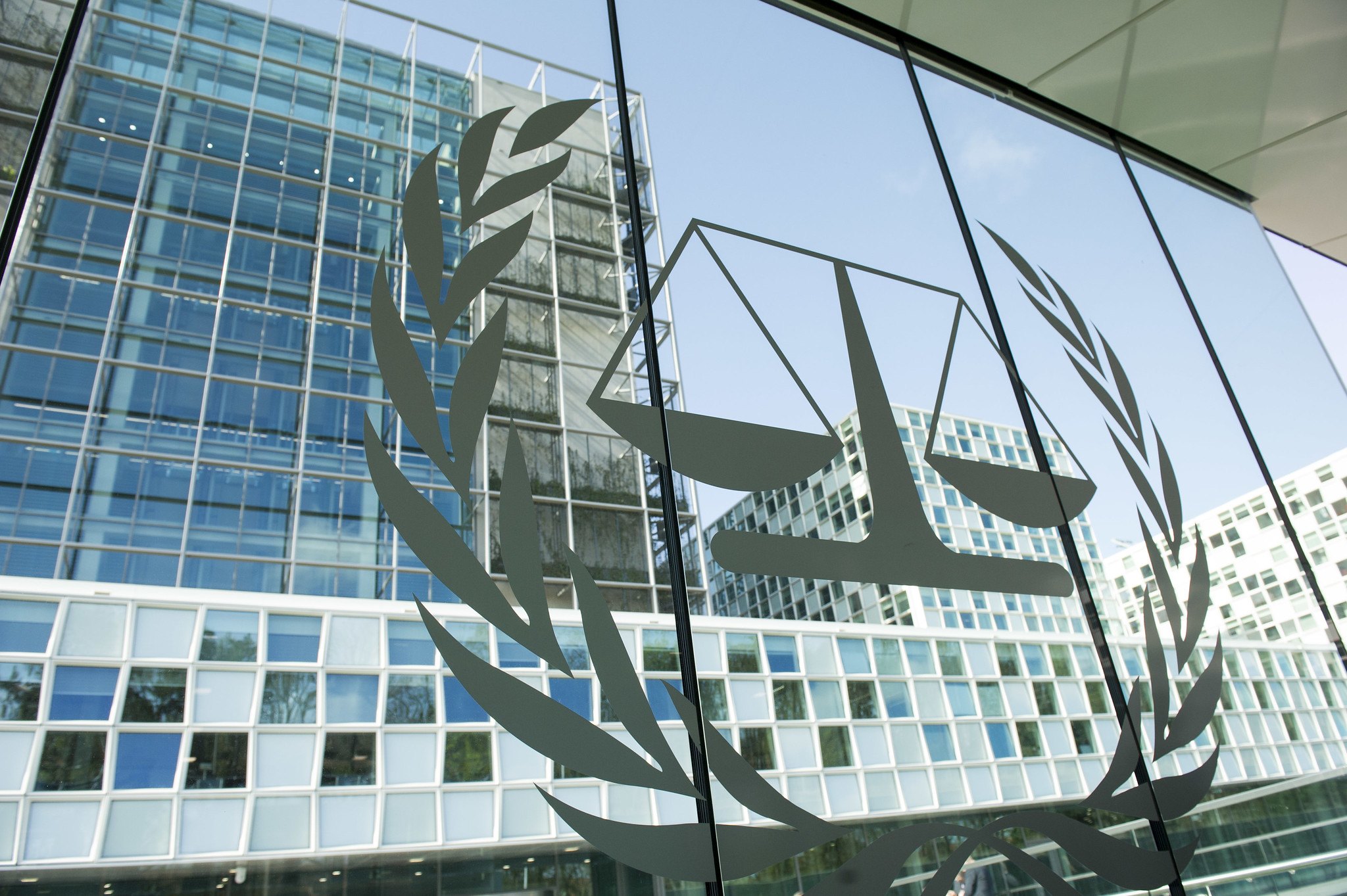SinoTech: US Proposes Tariffs On $50B of Chinese Imports After Concluding China Violates Trade Rules
The U.S.-China trade spat entered its latest phase on Tuesday afternoon as the Office of the United States Trade Representative (USTR) released a list of proposed tariffs against Chinese goods.
Published by The Lawfare Institute
in Cooperation With

The U.S.-China trade spat entered its latest phase on Tuesday afternoon as the Office of the United States Trade Representative (USTR) released a list of proposed tariffs against Chinese goods. The tariffs would levy new 25 percent duties on roughly $50 billion in Chinese imports, targeting high-tech industries favored under the ‘Made in China 2025’ plan unveiled by Premier Li Keqiang in 2015. Before putting the tariffs into effect, the USTR will now hear public comments over a period lasting until at least late May. The Chinese government moved quickly to respond, announcing today its own proposed retributory tariffs against $50 billion in American imports.
The proposed tariffs had been closely anticipated since March 22, when the USTR concluded, after a seven-month investigation, that the Chinese government  had adopted unfair trade practices in order to acquire American intellectual property and technological know-how. President Trump immediately issued a memorandum directing USTR to propose sweeping measures, including tariffs, against Chinese imports and investment. Although the tariffs have captured most of the headlines, Trump’s memorandum also instructed USTR to pursue its complaints before the WTO and to propose additional restrictions on Chinese investment in critical American industries. The USTR has already initiated its WTO challenge; proposals for investment restriction are due by May 21.
had adopted unfair trade practices in order to acquire American intellectual property and technological know-how. President Trump immediately issued a memorandum directing USTR to propose sweeping measures, including tariffs, against Chinese imports and investment. Although the tariffs have captured most of the headlines, Trump’s memorandum also instructed USTR to pursue its complaints before the WTO and to propose additional restrictions on Chinese investment in critical American industries. The USTR has already initiated its WTO challenge; proposals for investment restriction are due by May 21.
The trade representative’s office published its conclusions in a 215-page report that accuses the Chinese government of unfairly boosting favored domestic industries in an attempt to eclipse American technology dominance. In recent years the Chinese government has initiated a major push, manifested in the ‘Made in China 2025’ plan and other leading documents, to become a global leader in cutting-edge technology. The report highlights the role that transfer and theft of American intellectual property have played in this push, focusing on four Chinese trade practices that the USTR claims are unfair:
- Requiring transfer of technology from foreign investors to local firms;
- Discriminating against technology licensing by foreign companies;
- Directing outbound investment toward critical sectors of foreign intellectual property; and
- Conducting and supporting cyber-enabled commercial espionage against foreign firms.
Notably, the report concluded that China’s continued commercial cybertheft had violated the much-discussed September 2015 U.S.-China moratorium on state-sponsored cyber-enabled theft of IP, to which the parties recommitted in October of last year.
President Trump initiated the USTR’s investigation in August under Section 302(b) of the Trade Act of 1974. He will now consider the USTR’s proposed actions under 301(b), which grants the executive broad powers to impose tariffs, suspend trade agreements, or order “all other appropriate and feasible action within the power of the President” against discriminatory or unreasonable foreign trade practices. Section 301 was among America’s most feared trade weapons during the 1980s, but USTR has not levied trade sanctions under Section 301 since 1995, when the WTO’s dispute resolution system became available.
Recent reports indicate that administration officials are also considering restricting Chinese tech investment under the International Emergency Economic Powers Act of 1977, a statute that allows the president, through the Treasury Department, to impose sanctions against “any unusual and extraordinary threat, which has its source in whole or substantial part outside the United States, to the national security, foreign policy, or economy of the United States.” This statute could expand restrictions on foreign investment well beyond the current process for review of foreign acquisitions by the Committee on Foreign Investment in the United States (CFIUS), which has taken an increasingly skeptical stance toward Chinese tech-related mergers and acquisitions over the past year.
Chinese government responds with its own tariffs but encourages conciliation
The Chinese government responded to the Trump administration’s actions by accusing the U.S. administration of pursuing destructive “unilateral trade protectionist action” and proposing its own retributory tariffs against targeted American imports. On March 23, China’s Ministry of Commerce published a draft of proposed duties against 128 U.S. goods in retaliation against the steel and aluminum tariffs President Trump launched under Section 232 of the Trade Expansion Act of 1962. The Commerce Ministry put these tariffs into effect on April 2, one week after its initial announcement. After the USTR published its proposed list of Section 301 tariffs yesterday afternoon, the ministry responded this morning with its own $50 billion tariff package (CN), targeting soybeans, automobiles, and planes, among other goods.
Beijing’s official rhetoric has been equally adamant. In a March 23 statement regarding the Section 301 investigation, the Chinese Embassy in Washington promised to “fight to the end to defend its own legitimate interests with all necessary measures” in case of a trade war. State newspapers have accused the U.S. of upsetting the international trade order, and China Central Television, one of the government’s leading mouthpieces, portrayed Trump’s tariffs as an American attempt to obstruct China’s development in cutting-edge industries and maintain its technological hegemony. The Chinese Embassy “strongly condemn[ed] and firmly oppose[d]” the USTR’s latest list of proposed tariffs in its statement this morning.
The Chinese government has been careful to balance these sticks with carrots that could assuage the Trump administration’s concerns. Most significantly, Chinese officials maintain that the government will carry out the conciliatory market access measures it promised during its dual legislative assemblies last month. In a March 27 speech at the China Development Forum, Premier Li Keqiang reasserted that China would not force foreign companies investing in China to transfer their technology and promised that China would continue to open up to foreign enterprise.
But the Chinese government has also initiated policies that could protect domestic firms from U.S. retribution and boost its own high-tech industries. In the most forthright of these policies, China’s State Council lowered taxes for chipmakers and other technology companies that were expected to be targeted by the USTR’s tariff proposal. In response to Chinese firms’ enthusiasm for U.S. IPOs, the China Securities Regulatory Commission launched a pilot program that offers expedited listing on domestic stock exchanges through issuance of China Depositary Receipts (CDRs) to Chinese firms listed overseas.
Notwithstanding the public posturing from Beijing and Washington, any real progress in avoiding a trade war is likely to be achieved through behind-the-scenes negotiations. Last week, Treasury Secretary Steven Mnuchin and U.S. Trade Representative Robert Lighthizer held talks on China’s tech trade and investment policy with Vice Premier Liu He, the Chinese government’s economic czar. The U.S. side reportedly pushed for reduced tariffs on U.S. automobiles, improved access to China’s financial sector, and increased microprocessor exports from American chipmakers. The Chinese government appears amenable to that final request, but progress on other U.S. priorities was unclear. The Commerce Ministry encouraged further negotiations in its April 1 announcement of retributory tariffs against Trump’s steel and aluminum duties.
Conflict spreads to the WTO
The U.S.-China trade dispute is bubbling over to the World Trade Organization, where Washington and Beijing have each accused the other of violating international trade law. On March 23, the U.S. took the first step toward WTO action by requesting a consultation with the Chinese government on its measures relating to intellectual property rights. The Chinese representative to the WTO responded at a March 26 meeting of the Council for Trade in Goods, arguing that the U.S. tariffs themselves violate WTO law and urging WTO members to unite to prevent the U.S. from “wrecking” the international trade order through unilateral tariffs. In its statement this morning, the Chinese government promised to seek formal redress for the USTR’s proposed tariffs through the WTO’s dispute resolution system.
Both Beijing and Washington have sought to enlist support from other WTO members. Trump discussed China’s trade practices during phone calls with French President Emmanuel Macron and German Chancellor Angela Merkel, while China made a broader appeal to “lock arms to defend” against American unilateral action. Most WTO members have chosen to remain at least publicly nonaligned. At the March 26 meeting, Japan and the European Union stated their shared concern about Chinese IP policies but warned against non-WTO solutions, and WTO director-general Roberto Azevedo admonished that a U.S.-China trade war would have “a severe impact on the global economy.”
FCC takes up campaign against Huawei
On March 26, FCC Chairman Ajit Pai circulated a draft Notice of Proposed Rulemaking that would prohibit telecom providers from using the Universal Service Fund, a program that subsidizes rural communications services, to purchase equipment from “companies that pose a national security threat to United States communications networks or the communications supply chain.” The proposed rule was widely recognized as a further attempt to prevent Chinese telecom equipment manufacturers, most notably Huawei, from penetrating American communications infrastructure, and Pai acknowledged that his action was prompted by a December letter from 18 members of Congress warning of Huawei’s ties to the Chinese government. Chairman Pai will call for FCC Commissioners to vote on the proposal at their April 17 meeting. Congressional bills that would prohibit all federal agencies from buying equipment from Huawei or compatriot ZTE, proposed early this year in the House and Senate, remain in committee.
Huawei remains the favored target of U.S. lawmakers, who have exerted pressure to block its entrance into the U.S. infrastructure and consumer markets. Last week, Huawei’s efforts to penetrate the U.S. market took another hit when Best Buy decided to stop selling Huawei phones in stores—although there is no indication that Best Buy’s decision was the result of specific pressure from lawmakers. The move leaves Huawei without a major retail partner, while its phones remain available through Amazon and other e-commerce sites. Richard Yu, CEO of Huawei's consumer business group, promised that the company would remain “committed to the U.S. market and to earning the trust of U.S. consumers” despite the “groundless suspicions” against it.
In Other News
- While Ube suspended its autonomous driving tests in all U.S. cities after the first self-driving car fatality, the Beijing city government granted its first self-driving car license to Baidu’s autonomous-vehicle division. Shortly after, Baidu completed China’s first autonomous driving road test based on the 5G network environment in one of China’s new development zones. Shanghai granted its first licenses for driverless cars on March 1. Earlier this year, China’s National Development and Reform Commission released a draft strategy for the development of autonomous vehicles as part of the accelerated construction of China as an innovative nation.
- In addition to ground transportation, the Chinese government also moved forward in air delivery by issuing the first license for drone delivery to SF Express, a top courier company. The permit allows SF Express to conduct commercial drone deliveries in “approved airspace nationwide.” In early February, the Chinese government pledged to promote drone technology in transportation. On Friday, Chinese authorities busted the first reported case of cross-border smuggling by drone, arresting 26 suspects accused of illegally flying iPhones worth a total of nearly 500 million yuan ($79.8 million) from Hong Kong to Shenzhen.
- On March 30, Airbnb began automatically sharing information on guests in China, including passport and registration details, with the Chinese government. Airbnb explained the shift as a necessary step to comply with Chinese regulations, which require hotels to share their guest information with the government and foreigners to register their accommodations with the local authorities.
- Apple CEO Tim Cook co-chaired last week’s China Development Forum, where he called on the U.S. and China to embrace openness, trade, and diversity.Cook also announced plans to found a joint AI research center with Tsinghua University. CEOs from Google, IBM and Qualcomm also attended.
Commentary & Analysis
Elsewhere on Lawfare, Ashley Deeks and Shannon Togawa Mercer discuss the costs and benefits of facial recognition in China, the U.S., and around the world; Richard Harknett analyzes the U.S. Cyber Command’s new command strategy; and Timothy Meyer and Ganesh Sitaraman examine “The Power to Declare Trade War.” On the Cyberlaw Podcast, Stewart Baker and former Deputy U.S. Trade Representative Susan Esserman go in-depth on Trump’s tariffs (relevant section begins at 11:00), and briefly touch on China’s new social credit system (at 31:50).
At the Center for Strategic and International Studies, Scott Kennedy questions whether Trump’s trade measures are likely to achieve their objectives, and Samm Sacks writes on how China could use countermeasures ostensibly outside of trade law—such as the 2017 Cybersecurity Law—to retaliate against U.S. companies. Over at New America, Sacks joins Rogier Creemers, Paul Triolo, Xiaomeng Lu and Graham Webster to analyze the Central Leading Group for Cybersecurity’s promotion to Commission status. Elsa Kania, writing for the Australian Strategic Policy Institute in two parts, asks whether U.S. concern about Huawei is justified. At the Council on Foreign Relations, Edward Alden outlines the conditions that would be necessary for Trump’s tariffs to succeed; Lorand Laskai summarizes the U.S. antipathy toward Made in China 2025; and Lucas Ashbaugh examines whether “Cracking Down on Chinese Investment Might Lead to an Uptick in Cyber Espionage.”
The past two weeks spawned far too much analysis of the U.S.-China trade conflict to provide a comprehensive list; insightful articles appeared in The New York Times (“Trump’s Trade Threats Put China’s Leader on the Spot,” “Trump’s China Policy Has a Flaw: It Makes China the Winner,”), Reuters (“Extent of U.S.-China trade fight depends on Trump's goals,” “How Washington could really fix trade with China”), The Washington Post (“The United States is finally confronting China's economic aggression,” “Trump embraces the dumb way to deal with China”), and The Wall Street Journal (“China Started the Trade War, Not Trump,” “U.S. Trade Leverage With China Is Weakening”). Also in the Journal, Newley Purnell and Stu Woo also outline Huawei’s determination to lead 5G development, and Drew Fitzgerard and Stu Woo examine how the FCC’s restrictions on Huawei infrastructure may burden rural telecom providers. Louise Lucas of the Financial Times describes Huawei’s unencumbered success outside the United States.






